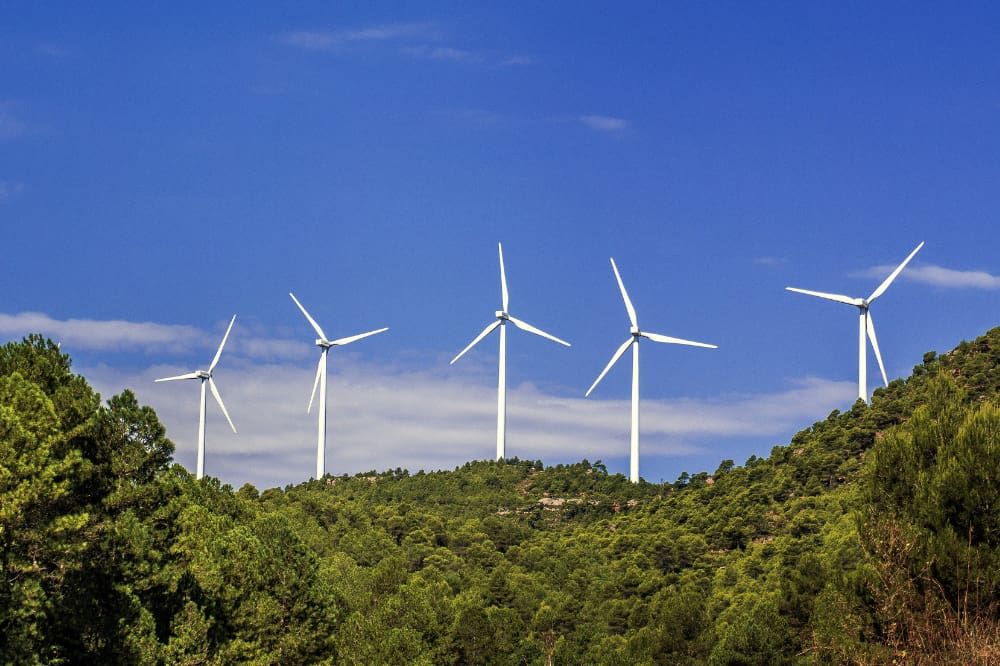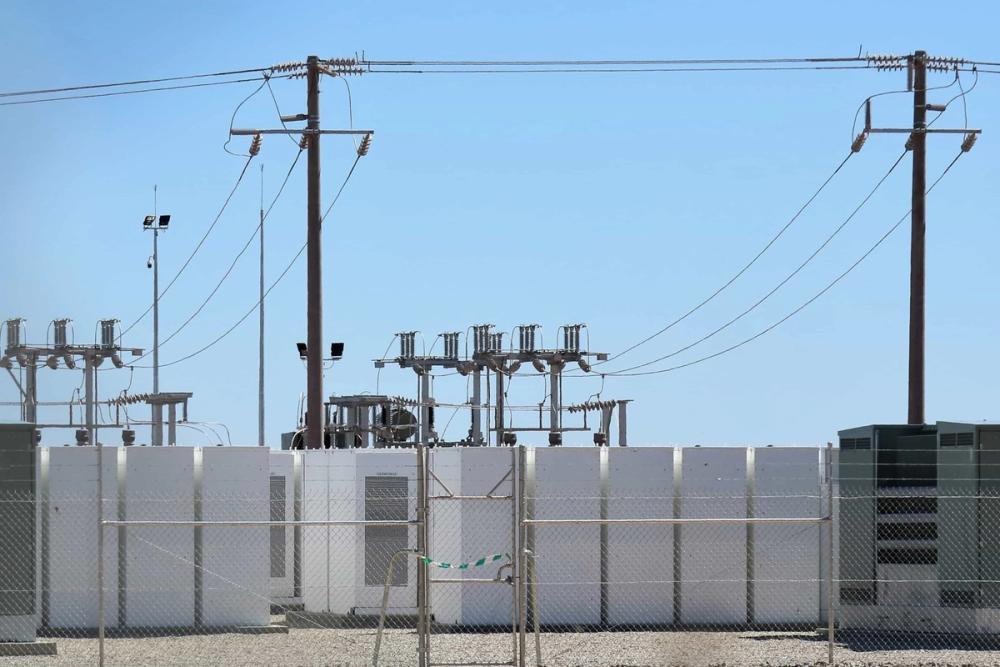What is Wind Energy and How Does it Work?

In the search for sustainability in businesses, wind power has emerged as a frontrunner in energy solutions, harnessing the natural force of the wind to generate electricity. But how exactly does wind energy work, and what role does it play in our transition to a greener future?
That’s what we’ll be exploring in this blog post. Read on for the fundamentals of wind energy, its mechanisms, benefits, and its growing significance in the global energy landscape.
Understanding Wind Energy
At its core, wind energy is a form of renewable energy derived from the kinetic energy of the wind. Wind turbines, the primary technology used to capture wind energy, consist of large blades mounted on a tower.
As the wind blows, it causes the blades to rotate, driving a generator to produce electricity. This process converts the kinetic energy of the wind into electrical energy, which can then be distributed to businesses, homes and industries.
How Wind Turbines Work
The operation of wind turbines involves several key components working together to harness and convert wind energy into usable electricity. The blades, typically made of fibreglass or carbon fibre, are aerodynamically designed to capture the maximum amount of wind energy.
As the wind flows over the curved surfaces of the blades, it creates lift, causing them to rotate. The rotation of the blades turns a shaft connected to a generator, where mechanical energy is converted into electrical energy through electromagnetic induction. The electricity generated is then transmitted through power lines to consumers or stored in batteries for later use.
Types of Wind Turbines
The selection of wind turbine type depends on various factors such as site conditions, wind resource characteristics, project goals, and budget considerations.
Horizontal-axis turbines are well-suited for large-scale wind farms in open, unobstructed areas with consistent wind patterns. Vertical-axis turbines, on the other hand, are better suited for urban or distributed applications where space is limited, and wind conditions may be less predictable.
Horizontal-Axis Wind Turbines
Horizontal-axis wind turbines are the most common type of wind turbine used for electricity generation. These turbines feature blades that rotate around a horizontal axis perpendicular to the direction of the wind.
These turbines can be further classified into two main designs: upwind and downwind turbines. In upwind turbines, the rotor faces into the wind, while in downwind turbines, the rotor faces away from the wind.
Upwind turbines are more prevalent due to their higher efficiency and stability in turbulent wind conditions. Horizontal turbines are typically installed in large wind farms, which can capture wind from multiple directions and generate significant amounts of electricity.
Vertical-Axis Wind Turbines
Vertical-axis wind turbines have blades that rotate around a vertical axis parallel to the ground. Unlike horizontal turbines, vertical turbines do not need to be pointed into the wind to operate effectively, making them suitable for urban or decentralised applications.
While vertical axis turbines have certain advantages such as lower maintenance requirements and suitability for constrained spaces, they are less common than horizontal turbines due to their lower efficiency and reliability in turbulent wind conditions.
Hybrid Wind Turbines
Hybrid wind turbines combine elements of both horizontal-axis and vertical-axis designs to leverage the strengths of each configuration.
These turbines typically feature a vertical-axis rotor coupled with a horizontal-axis generator, allowing for increased efficiency and performance across a wider range of wind conditions.
Hybrid turbines can also incorporate innovative technologies such as blade pitching and yawing mechanisms to optimise energy capture and minimise structural loads.
Combining the advantages of horizontal- and vertical-axis designs, hybrid wind turbines offer improved reliability, versatility, and energy output compared to traditional single-axis turbines.
Advantages of Wind Energy
Wind energy offers numerous advantages over traditional fossil fuels and other forms of renewable energy. First and foremost, wind power is abundant and inexhaustible, making it a reliable and sustainable source of electricity.
Unlike fossil fuels, wind energy produces no greenhouse gas emissions or air pollutants, helping to mitigate climate change and improve air quality. Additionally, wind turbines have a relatively small footprint compared to other forms of power generation, allowing for flexible deployment in diverse environments.
Moreover, wind energy allows homes and businesses to reduce the total energy bills they have to pay by creating their own renewable energy and not relying on the national grid. Since wind energy is distributed more thoroughly, it is an excellent way to cut costs on energy.
Challenges and Considerations
While wind energy holds great promise, it is not without its challenges and considerations. One of the primary challenges is intermittency, as wind speed and direction can vary unpredictably, leading to fluctuations in power output.
To address this issue, grid operators employ strategies such as energy storage, demand response, and grid interconnection to ensure a stable and reliable electricity supply.
Additionally, concerns about visual and noise impacts, wildlife interactions, and land use can arise in the development of wind energy projects, highlighting the importance of careful planning and stakeholder engagement.
The Future of Wind Energy
Despite the challenges, the future of wind energy looks promising, with continued advancements in technology, policy support, and market expansion driving its growth.
Innovations in turbine design, materials, and control systems are increasing efficiency, reducing costs, and expanding the range of suitable locations for wind power deployment.
Furthermore, policies promoting renewable energy adoption, such as tax incentives, renewable portfolio standards, and carbon pricing mechanisms, are driving investment and market demand for wind energy worldwide.
As a result, wind power capacity is expected to continue growing, playing a pivotal role in the transition to a cleaner, more sustainable energy future.
How Can Balance Power Help You?
At Balance Power, our team of experts is dedicated to helping landowners and businesses across the country with their energy needs and encouraging the use of renewable energy sources across the country.
We have a keen expertise in a multitude of different sustainable energy sources and battery storage systems that businesses can use to reduce their energy consumption and improve their carbon footprint.
Our offering includes a unique private wire service that allows large businesses and landowners across the country to benefit from one another’s use of renewable energy while simultaneously helping the planet.
Conclusion
In conclusion, wind energy represents a vital component of our renewable energy portfolio, offering abundant, clean, and sustainable electricity generation. By harnessing the power of the wind, we can reduce our dependence on fossil fuels, mitigate climate change, and create a more resilient and equitable energy system.
With ongoing innovation, investment, and collaboration, wind energy will continue to play a crucial role in shaping a brighter and more sustainable future for generations to come.


